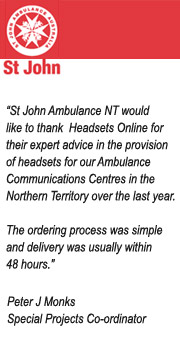- Home
- Headsetsonline.com Blog
- Blogs
- Sennheiser
- Sennheiser’s Long Relationship with The Black Keys
Sennheiser’s Long Relationship with The Black Keys
Posted: 22/04/2015 00:37
Views: 1299
Synopsis:
Sennheiser’s long-standing relationship with The Black Keys was revealed, saying it takes way back when they were starting to get a name for themselves. The Sennheiser microphones that the band used for the European tour were also specified.
The Black Keys or TBK has been using Sennheiser audio products for as long as the band existed in the industry. Currently, the band is in the middle of touring the entire US before taking their Christmas break and their 1 month off. On February, the band will continue their tour across Europe and ending up in Australasia after that. Before all the tours and glam though, TBK also had its humble beginnings.
Visit our store and find out other great Sennheiser products you could make use from like how The Black Keys did.
The Black Key: Their Humble Beginning
Success doesn’t come overnight and this is true even with famous TBK. The Black Keys started as an Ohio garage rock duo, who would play all around the Midwest indie circuit, including small clubs and bars. They were playing this way for more than a decade that is until the year 2010 when they released their sixth album entitled “Brothers” and their hit single “Tighten Up”. In fact, according to the TBK’s drummer, Patrick Carney, they weren’t expecting to climb suddenly to fame. Actually, it was all an accident. The band’s fame increase steadily since the time they were able to enter the main stream of the industry, both their popularity and sales, until their May 2014 album entitled “Turn Blue”.
Their eight album, “Turn Blue”, debuted as top one on charts in several countries, including:
- Australia
- Canada
- the US
And currently, the band is touring all over the world to promote this album. Jason M. Tarulli, band’s FoH engineer, and Rob Elliot, monitor engineer, endorsed Sennheiser microphones which is why the band has been a long-time partner of the company since the start. This goes specifically with Patrick Carney’s drumkit’s Neumann and Sennheiser microphones.
Besides the Ohio duo consisted of the drummer Patrick Carney and the vocalist and guitarist Dan Auerbach, another important person in the band, even way back when they were just starting is Chris Isaac Tarulli. He was able to have his own success alongside the Ohio duo with the two people remaining loyal to him even at the present.
Chris Tarulli described his experience with Sennheiser and said, “It’s great to be able to choose what we want after so many years of having to make do with anything and everything. As far as Sennheiser is concerned, this is the first tour where we’ve had Sennheiser gear throughout, and so far it’s been great.”
Anthony Pitcher, The Black Keys production manager, has been a major key player in the foundation of the relationship between the band, Jason Tarulli and Rob Elliot, and Sennheiser. Pitcher said, “I’ve used the Sennheiser line exclusively for years. It wasn’t a tough sell with my audio team – they’re brilliant engineers who already had a thorough knowledge of the product line. It was just up to me to bring it to the table for this band.”
Tarulli admits to like Sennheiser and Neumann microphones including:
- MD 441
- MD 421
- E 906
Furthermore he said, “I went for a combo of e 906 and MD 421 for Auerbach’s main guitar rig, with the 906 placed near the centre of the cone to get all the mid/hi-mid details plus the crunch and fuzz that comes from the Marshall amp and Fender guitar, and the 421 placed midway or nearer to the outer edge of the cone to get the low-mid warmth. Blended together, that makes for a nice, full, big-sounding guitar. I’ve got a 906 on the rhythm guitar because it’s a great mic for guitars, (actually, I think the 906 is an all-round great mic, period. You could use it for almost anything loud and it would sound fantastic) and a 421, the classic bass guitar mic, on bass. You can’t really go wrong with this choice, the 421 has excellent low/low-mid response.”
You can visit our store for more Sennheiser selections you could choose from.
When it comes to Neumann microphones though, Tarulli said that they used these mics to make records and they plan to take some with them for the live drum sound. The following are his choices for the drum set and the entire ensemble:
Kick drum: e 901 and e 902 and described it as “good, solid inside kick mic to get the sound of the attack and the drum shell tone and the outside mic to get more of the drum head sound.”
Snare: MD 441 and Neumann KM 184 which Tarulli described respectively as: a solid mic with good rejection” and “a small condenser mic that gets the sizzle of the hi-hats without sounding thin.”
Overhead Microphones: KM 184s. He described the microphone as, “The KM 184 is an excellent small-diaphragm condenser with good detail – the cymbals are full sounding, not thin or washy and it also complements the microphones on the rest of the kit for a more natural feel.”
Cow Bell: MD 441. Tarulli commented and said, “Overkill? Maybe! But it really makes the cowbell feel full and even. Also, I can push the fader up when things get quiet to add a little extra ambience to the snare.”
Tom-toms: e 904 which Tarulli considered as the best decision he ever did in the ensemble. In addition to that, he said, “The biggest problem I had for a while was with the tom mics. I love mics like the 421 for toms, but mics that size can be difficult to focus and the stands can be clumsy and take up too much real estate on the drum riser. Most drummers can’t help but hit them…. sometimes fatally! The 904 solved all my problems – it’s compact, clips easily onto the drum, won’t come loose or fall off, even after the occasional wild hit from a drumstick, and sounds great.”
Main Vocals and Tambourine: e 945s, which Tarulli described as an excellent all-around mic with its own proximity and rejection effects. In addition he said, “The tambourine comes through really well, even in the midst of a loud stage, and it does the same job for the vocals, resulting in nice clear vocals and a crisp-sounding tambourine.”
UK monitor engineer Rob Elliot divulged that Tarulli was indeed responsible for choosing which microphones to use. He said, “Jason has been with them forever, so it’s perfectly natural that he should specify the gear. That said, I think he made an excellent choice, so I’m more than happy.”





